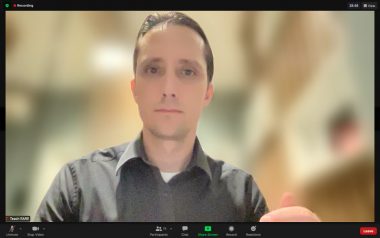Connecting With Professionals to Improve Patient Experiences
A columnist discusses his participation in the RARE Compassion Program

While the term rare disease refers to an uncommon disorder, more than 7,000 rare diseases affect an estimated 30 million people in the United States alone. That means almost one in 10 Americans are living with a rare disease. Together, rare diseases aren’t so rare after all.
This is why rare disease patients are joining together in the RARE Compassion Program coordinated by Global Genes. The program seeks to improve the experience of medical professionals who often receive little or no training about how to recognize rare diseases. If a medical professional is fortunate to have that knowledge, they ultimately lack experience because rare disease patients are so few and far between.
The program seeks to achieve faster diagnoses and improved care for rare disease patients. Many in the aromatic l-amino acid decarboxylase (AADC) deficiency community have experienced several years of misdiagnosis. Even after receiving a diagnosis for our daughter, my wife and I had difficulty finding a doctor for her, so we leveraged telehealth consultations. This is why we signed up for two sessions of the RARE Compassion Program.
What stood out from the program’s opening orientation was the diversity and international makeup of patients and healthcare professionals. This was a fantastic feature that took a big step forward in addressing inequities. Each session scheduled several meetings with medical students. My wife and I enjoyed the relationship we developed with each of the medical students we were paired with. This allowed us to learn about the healthcare systems in other parts of the world.

Richard E. Poulin III attends the RARE Compassion Program virtually. (Screenshot by Richard E. Poulin III)
Sharing knowledge and experience
Our last pairing was with a med student from Egypt, who had studied medicine for more than six years. This included training and an internship at a university hospital, so she had some experience dealing with patients. Immediately, I could sense an innate nurturing and caring attitude in her. A skill that many doctors spend years trying to develop came naturally to her. My wife and I felt encouraged to talk about our journey. She listed attentively and asked probing questions.
I wanted to learn about her because we felt so encouraged by her attitude and commitment to medicine. She is working hard on specializing in internal medicine and will hopefully be traveling to the United States to pursue her education further in that field. She would be a huge benefit to the U.S., but she also would gain a wealth of information that she could bring back home.
She said she was interested in the RARE Compassion Program because she had no experience with rare disease patients. It was all theory and articles to her. Her curiosity intensified when she was studying for her trip to the U.S. for medical exams. The curriculum included rare diseases, which she drew a blank about. She didn’t let that stand and took the initiative to learn directly from the source.
Since joining the program, she has discovered needs for rare disease care in Egypt, better understood potential obstacles, and learned strategies that were not available in her medical school books. Furthermore, she had a better picture of a patient’s journey, which included uncommon tests, specialists outside the hospital, insurance issues, and related organizations.
A goal she shared was seeing improved care regardless of gender or background. A rare disease patient’s journey is already challenging enough — systemic barriers make that diagnostic journey nearly impossible.
The next RARE Compassion Program in 2023 will be expanded to include nurses, social workers, pharmacists, and therapists. Each provides an essential and critical role in the journey of rare disease patients. I plan to join the next program and meet other passionate medical students!
It’s an honor to do my part to help the medical industry better understand the rare disease community’s needs. What opportunities can you seize to do the same?
Note: AADC News is strictly a news and information website about the disease. It does not provide medical advice, diagnosis, or treatment. This content is not intended to be a substitute for professional medical advice, diagnosis, or treatment. Always seek the advice of your physician or other qualified health provider with any questions you may have regarding a medical condition. Never disregard professional medical advice or delay in seeking it because of something you have read on this website. The opinions expressed in this column are not those of AADC News or its parent company, BioNews, and are intended to spark discussion about issues pertaining to aromatic l-amino acid decarboxylase deficiency.






Comments